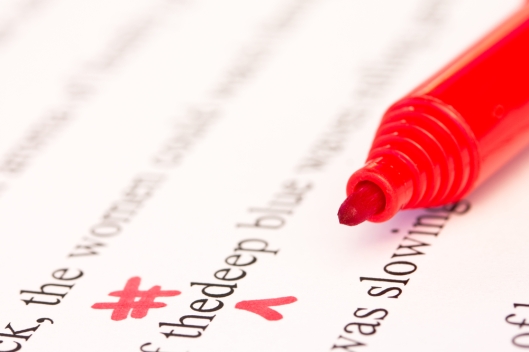Tags
advice, authortoolbox, authortoolboxbloghop, editing, Elder Queen, EQv1, first drafts, OMG I finished a draft!, tips, tricks, writing

Hello, friends and fellow #AuthorToolBoxBlogHop writers! I’m sorry I wasn’t around last month, but I was kind of swamped finishing the first draft of my novel! (How’s that for burying the humblebrag?)
But I’m back this month, and so are lots of other writers with fantastic thoughts and advice. I encourage everyone to go and check out the Blog Hop’s main link for more!
So yes, after a couple of years of struggling to put the pieces together, I finally managed to finish a complete draft of my first novel. And since I’m finding myself a little bit pre-occupied with that, I thought that rather than try to fight the tide I’d give in to the inevitable and share the editing advice that I’m trying to put into practice right now.
The first piece of wisdom is something I’ve heard passed around for ages and ages: don’t try to dive straight into editing after you’ve finished writing. A writer needs some time to clear her head so that she can look at the work with, if not objectivity, a certain distance. I had planned on giving myself two months for this, and I’m not quite sure I’m not making a mistake by going back so quickly. I found myself dreaming about things I’d written and how I wanted to adjust them, and it seemed like too much work to force myself to avoid it, but I might have done myself a disservice here.
We’ll see!
The second bit of advice, which I’m doing much better about following: don’t worry about the details yet. A first draft is really supposed to be the bones of the story, and it’s got a long way to go before it will have muscles or skin, much less hair and makeup. Given that, it doesn’t make very much sense to fixate on word choice or sentence structure. The first editing pass is about seeing if the skeleton is solid; do the chapters successfully carry the story from the beginning to the end? Is the pacing as quick or relaxed as you want it to be? Are the characters interesting? How many plot holes still need to be filled in? Have you just plain forgotten to include something?
This is obviously an area where planning vs pantsing will come into play. I know that there are people who write solid first drafts that don’t need to be attacked with a sledgehammer. To you, I say: harumph.

I’m not jealous, you’re jealous! Shut up! Why are you hitting yourself?
My personal take on the subject is that worrying about specific words, sentences, points of grammar or style, are ultimately just a waste of time. I feel almost certain that I’m going to need to rewrite significant portions of my first draft to deal with mistakes I’ve made in chronology, plot, logic, character, pacing, &c.
Also, most of my first draft is written in the 3rd person present tense, and my final novel is going to be in 1st person past tense, so almost literally every word is going to need to be adjusted to fix that, if nothing else.
(I’m not entirely sure if that was a good idea, but it’s too late to fix that now!)
The third piece of advice is more of a collection of tips that I’ve pieced together from a variety of sources, including several #AuthorToolboxBlogHop entries from past months. Kristina Stanley, Cheryl Sterling, and Louise Brady come immediately to mind, although they’re by no means the only ones!
It comes in the form of a list of questions I ask myself as I’m reading through each chapter. They are as follows:
- What do I want to happen in the scene?
- Is that actually happening? If not, what else is happening?
- What do I think is the point of this chapter/scene?
- What point does this chapter/scene serve narratively?
- What do the characters think is happening?
- How does this scene advance character development?
- How does this scene advance plot development?
- What does this scene assume the reader already knows? Do they know it?
- What does this scene imply, that I’ll have to remember to maintain further down the line?
- Does this scene make sense?
- What would happen if I cut this scene?
- What do I like about this scene?
- What don’t I like about this scene?
- How do I fix #13?
As I’ve been reading through my first draft, I have a separate document open beside it, where I write down the answers to those questions for each scene. Sometimes my answers are more thorough than others, and I’ve definitely used them as a chance to tease myself or complain to myself for future drafts.
I’m probably not as funny as I think I am.
But forcing myself to look at each piece as the next piece in a puzzle, the next car in the train, feels like it’s really helping me to edit The Novel as a whole, rather than getting lost in the minutiae. As brutal as it is to look at a bit of awkward writing or sloppy dialogue, it really doesn’t matter if people sound like robots in a scene that’s going to get cut completely or reworked into unrecognizability.

Pictured: My Novel
My plan for my second draft is to go through, again scene by scene, and try to put my notes into practice. Hopefully, I’ll have left myself a set of guidelines that will be clear and easy to follow. And then the writing will be effortless, and the results will be articulate and poignant, and my novel will sell in weeks, and life will be glorious forever.
A girl can dream, right?


Good luck on your first pass (and a giant congrats on finishing the first draft)!
I’m on my third draft and third pass, which means I’m still stuck in the revision loop. Great tips for any stage of revision!
LikeLiked by 1 person
Oh, that’s exciting! I’m looking forward to my third draft, because in my head that’s where I get to start actual wordcraft instead of shoring up the structure. I hope your third pass treats you well. 🙂
LikeLiked by 1 person
Congrats on both the completion of your first draft and the successful execution of the humblebrag! I’m doing a first draft revision of my first 60K right now, and then I’ll write the last 30K or so next month for camp nanowrimo, so this is very timely for me to read. It sounds like you’re taking a really logical approach to editing, which I love!
LikeLiked by 1 person
Thank you! (x2) I definitely have about 20k words that need to be written, in and around the completed draft stuff, so I feel you there. Good luck with camp NaNo, and I’m glad you enjoyed my post!
LikeLike
P.S. Do you have a Facebook page? I think I already asked you this, but things change, so let me know if you ever get one, because I like to tag authors when I share their stuff on Facebook. 🙂
LikeLiked by 1 person
I do – I’m just Katherine Barclay, although I might be set to only friends-of-friends being able to see me. I’ll check it out tomorrow morning, I’ve been meaning to go public for a while. 😀
LikeLike
Congratulations on finishing your first draft, and thanks for the shoutout 🙂
I love your logical approach. There’s often a lot wrong with the plot of a first draft, and editing every sentence doesn’t make sense to me either. My own work in progress is going to need a large rewrite because the plot doesn’t work well, so much so that I might start over now rather than finish the first draft!
LikeLiked by 1 person
Thanks!
I definitely had that problem with this novel, where I realized I needed to shift almost everything when I was about half way through. I started again, and I kind of wish I hadn’t, because it added another year onto the work … but now I’m really happy with what I’ve got … so I don’t know. Good luck, and let me know what you end up doing!
LikeLiked by 1 person
Completing the first draft is a huge milestone. Great tips and questions to ask as we write. My favorite tip? Don’t edit too soon 🙂
LikeLiked by 1 person
Thanks! Hopefully, they work. 😉
LikeLiked by 1 person
I think that many of us have their own approach to revision. I tend to outline which helps build strong bones. My first run through is making sure the bones are strong–just as you do–but I fix everything I find along the way. Mostly because each round, I add more details of places, people, and things. In the end I think it makes for better story writing–but that’s my style. By the time I’m ready for my beta readers, I’m very happy with what I’ve done.
Anna from elements of emaginette
LikeLiked by 1 person
That approach sounds very appealing – if I’d had the strong outline to begin with, which I, unfortunately, didn’t. It reminds me of painting, setting down broad color notes and then slowly refining the shapes. It seems incredibly satisfying; I’ll put it on my list of approaches for next time!
LikeLiked by 1 person
Thank you so much for the mention! And congrats on having that first draft written! I so agree that you should focus on the story at this stage and not the details – although it’s hard creative energy so if I’m tired I focus on the details just to feel productive.
LikeLiked by 1 person
That makes sense. I’ve got some chapters that are a lot barer than others, so maybe as I’m working I’ll use the closer-to-done chapters as a carrot for myself, if I’m feeling drained by the skeleton chapters. Thanks for the thought!
LikeLike
YASSSSS you did it girl!!! I am SO proud of you!!! Can’t wait for you to finish edits so I can read it!!! Great post and FANTASTIC work!!! 😀
LikeLike
Thank you!!! I can’t wait to be able to start showing it to people – but right now, a couple of chapters are just sinkholes. So I must be patient.
LikeLike
If there is one thing that (procrastinating about) editing my full-length pantser novel has taught me, it’s that time spent with plotting up front is not wasted. Grrr.
I love your list of questions. It’s going to be hard, but it’s going to be worth it! Congratulations on what you’ve achieved so far.
LikeLike
Oh my goodness, that list, though! What an excellent way to evaluate scenes. And I totally relate to not spending a lot of time on sentence structure in the first couple of drafts. I find that I revise sentences naturally as I’m working through each draft so, when it actually comes time for that level of editing, I’ve already done a lot of the work.
Thanks, again, for the list. I’m totally integrating that one into my toolbox!
LikeLike